Looking to add a touch of elegance to your bathroom? Ever considered the unique blend of wood and epoxy in a sink? Imagine the perfect marriage of natural beauty and modern design right in your own home. Picture the seamless integration of functionality and style. With a wood and epoxy sink, you can bring nature indoors while enjoying a durable and aesthetically pleasing addition to your space. Elevate your bathroom decor with this innovative and eye-catching feature that is sure to impress. Are you ready to transform your bathroom into a luxurious retreat?
Understanding Epoxy
Epoxy Basics
Epoxy resins consist of two components, a resin and a hardener, which when mixed together create a strong bond. The curing process involves a chemical reaction that transforms the liquid mixture into a solid material. This transformation is crucial for bonding with wood surfaces. Epoxy’s versatility shines in woodworking, where it can be used for filling gaps, creating laminates, or coating surfaces.
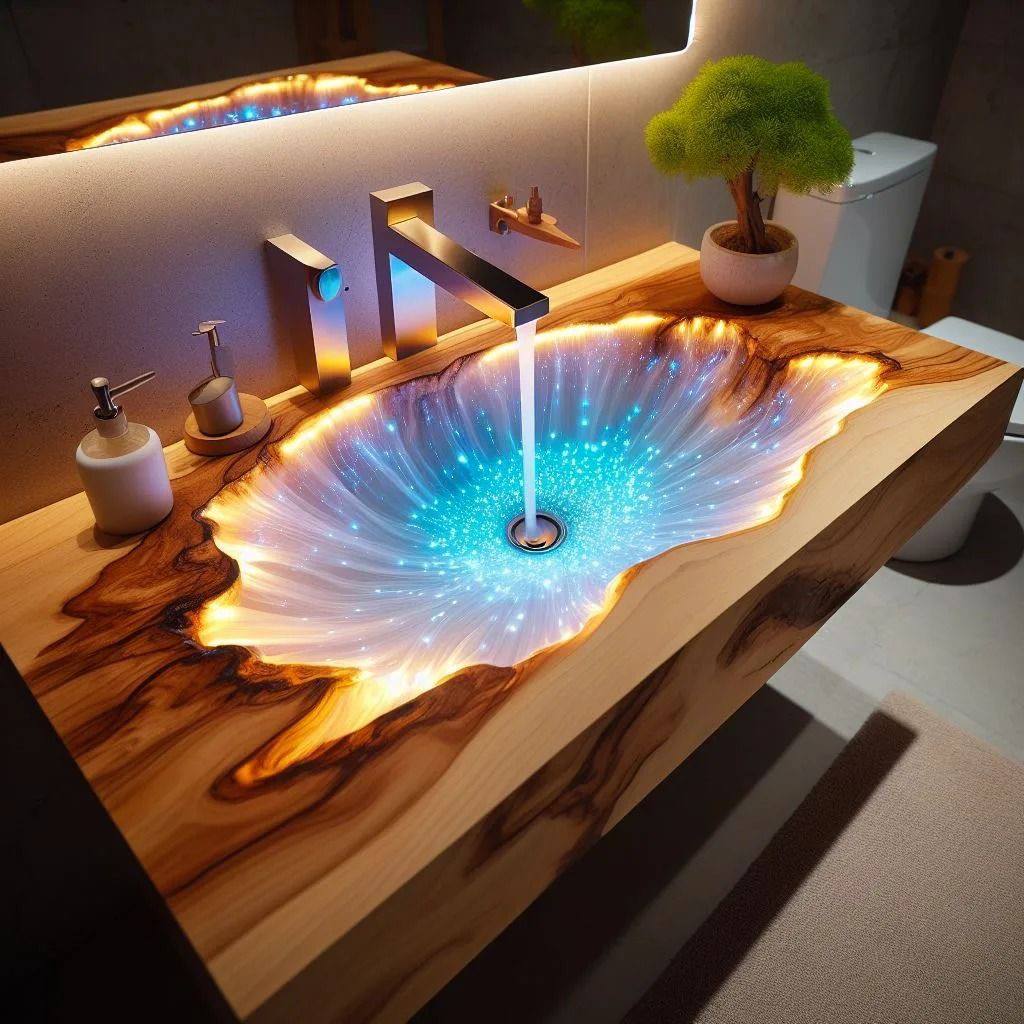
Benefits for Wood
Epoxy brings out the natural grains and patterns of wood, enhancing its aesthetic appeal. Its moisture-resistant properties make it an ideal choice for protecting wood against water damage and wear over time. By penetrating into the wood fibers, epoxy can reinforce and stabilize surfaces, extending the lifespan of wooden structures.
Sealing Techniques
Sealing wood with epoxy can be done through techniques like flood coating or brush application. Proper sealing is essential to prevent moisture intrusion and ensure long-term durability of wood products. The sealing process not only provides protection but also contributes to the visual appeal of wood and epoxy sinks by creating a smooth and glossy finish.
Best Woods
Select ideal wood types like teak, walnut, or oak for constructing wooden sinks. Different woods offer unique characteristics, such as durability and grain patterns, enhancing epoxy finishes. Consider factors like water resistance and durability when choosing the most suitable wood for your project.

Durability Factors
Understand how humidity levels and proper sealing influence the longevity of wood and epoxy sinks. Challenges may arise in maintaining the finish due to exposure to water and cleaning agents. Enhance sink durability by applying multiple coats of epoxy and using protective sealants.
Aesthetic Appeal
Combine wood and epoxy to create visually stunning sink designs with a modern touch. Customize sinks with various color pigments, textures, and inlays to achieve unique aesthetics. Balance between aesthetics and functionality by ensuring the sink design complements its practical use.
Designing Turned Wood Sinks
Planning Process
When embarking on a wood and epoxy sink project, key steps involve designing the sink, selecting materials, and determining size. Considerations for design include shape, color, and style to ensure it complements the space. During planning, focus on functionality by assessing the sink’s usage and maintenance needs. Thorough planning is crucial for successful project execution to avoid mistakes.
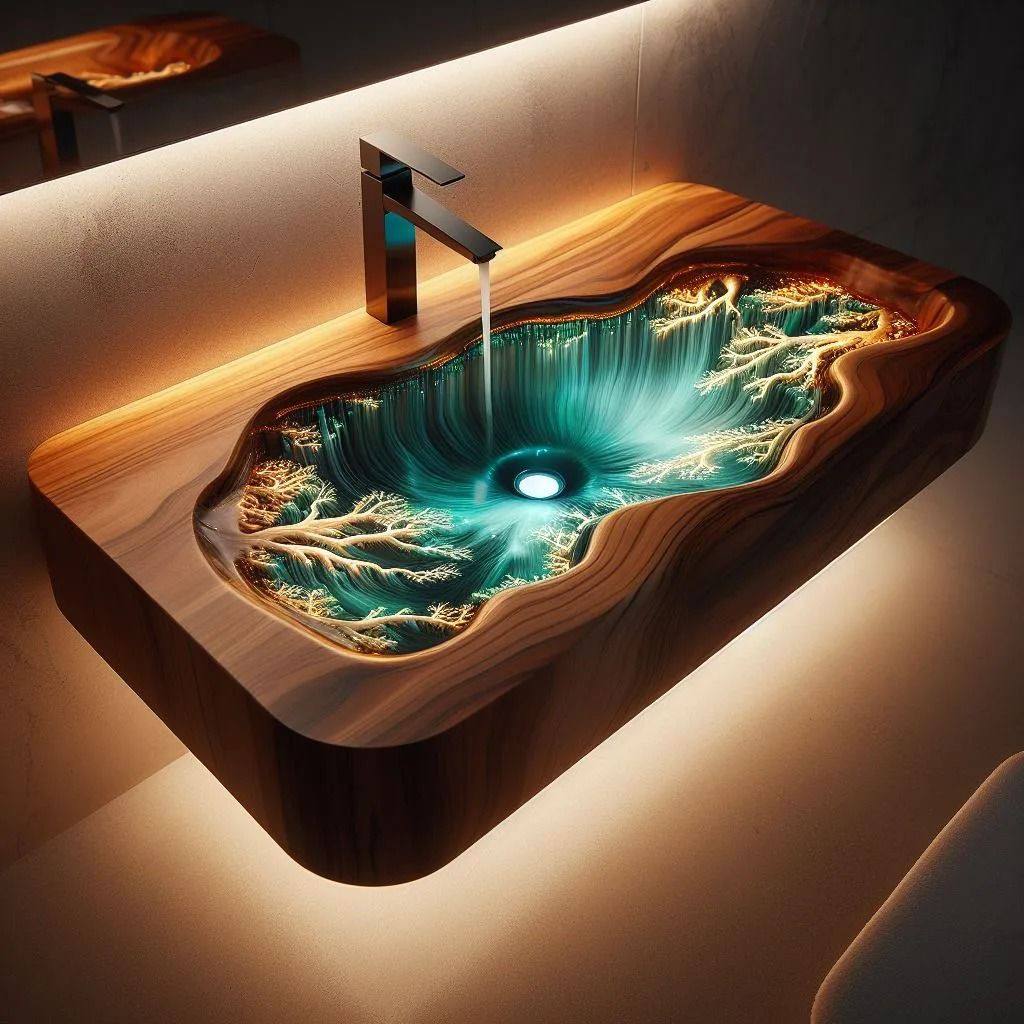
Shaping Techniques
Various techniques are used to shape wood and epoxy sinks, including turning, carving, and molding. Tools such as chisels, gouges, and sanders are essential for achieving specific sink designs. Shaping techniques play a vital role in enhancing the sink’s aesthetics and ensuring optimal functionality. Understanding these techniques is key to creating a unique and durable wood and epoxy sink.
Finishing Touches
The final steps in finishing a wood and epoxy sink involve sanding, sealing, and polishing the surface. Attention to detail is paramount during the finishing process to achieve a smooth and flawless appearance. Finishing touches like applying protective coatings or adding decorative elements can significantly enhance the overall quality of the sink.
Epoxy Application Guide
Surface Preparation
Proper surface preparation is crucial before applying epoxy to wood sinks. Cleaning and sanding techniques are essential for optimal adhesion. The final finish quality heavily relies on surface preparation.

Mixing Epoxy
Correct ratios and thorough mixing are vital for successful epoxy resin application. Avoid common mistakes by following precise mixing methods. Thoroughly mixed epoxy ensures a smooth and durable finish.
Application Process
Follow step-by-step instructions when applying epoxy to wood sinks. Different application techniques yield varied final finishes. Precision and consistency play key roles in achieving the desired outcome.
Curing Time
Several factors influence the curing time of epoxy resin, affecting the durability of the finish. Optimal curing conditions are necessary for a long-lasting result. Ensure proper curing by following expert tips for wood surfaces.
Sealing Wooden Countertops
Pre-Sealing Prep
Before sealing wood and epoxy sinks, it’s crucial to prepare adequately. Begin by sanding the wood surface to create a smooth texture, ensuring better adhesion of the epoxy resin. Next, clean the surface thoroughly to remove any dust or debris that could affect the seal quality. Proper pre-sealing prep sets the foundation for a durable and long-lasting finish.
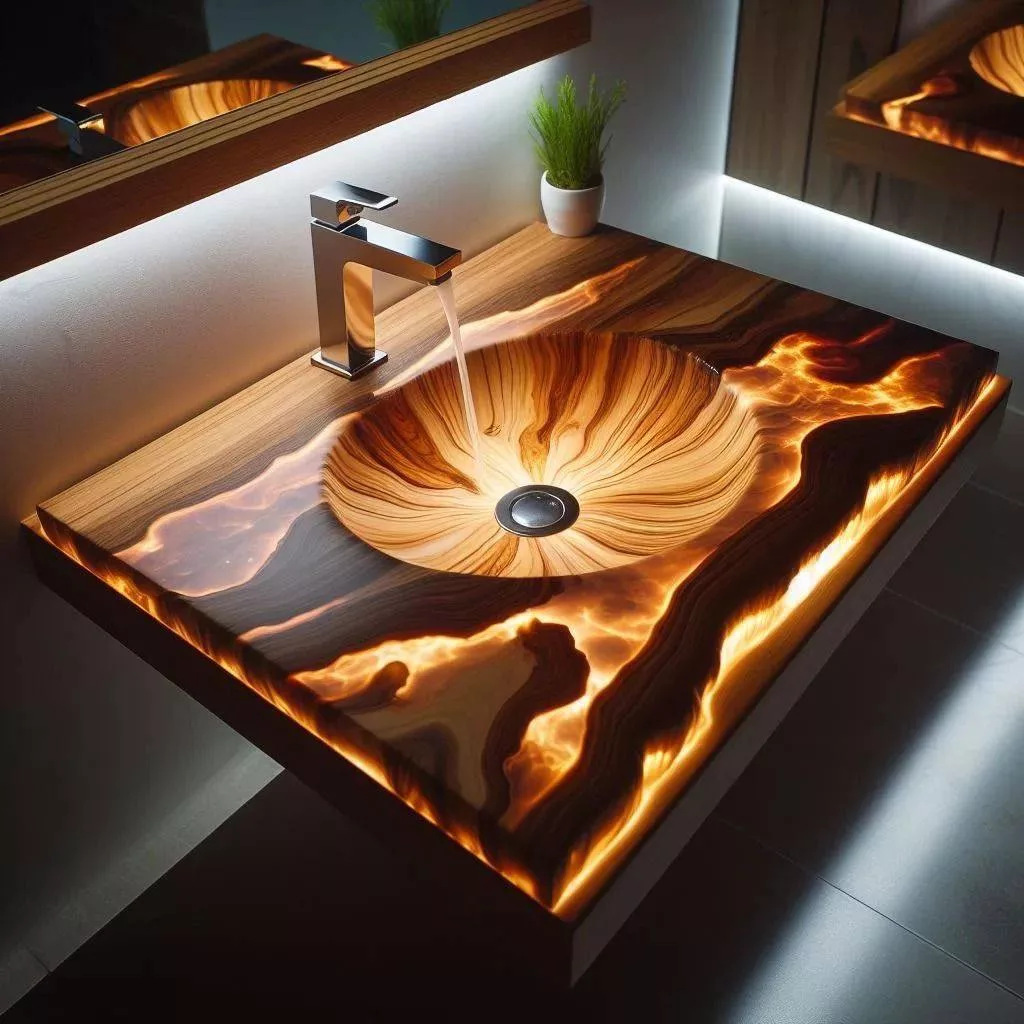
Epoxy Sealing Steps
Sealing wood with epoxy resin involves a series of specific steps. Firstly, mix the epoxy components according to the manufacturer’s instructions. Then, apply the epoxy in thin layers, allowing each coat to cure before adding another. Layering the epoxy evenly is essential for achieving a uniform and robust seal on wooden countertops. Following these sealing steps meticulously ensures an impeccable finish.
Aftercare Tips
To maintain wood and epoxy sinks, adopt regular cleaning routines using mild soap and water to prevent staining or damage. Avoid harsh chemicals that can degrade the epoxy over time. Periodically reseal the countertop to maintain its shine and protection. Address any scratches or dull spots promptly to preserve the sink’s aesthetic appeal and functionality.
Creating Durable Sink Designs
Combining Materials
Wood and epoxy sink designs offer a unique blend of natural beauty and modern durability. By combining these materials, you can create sinks that are both aesthetically pleasing and highly functional. Integrating wood with epoxy allows for endless design possibilities, from incorporating intricate patterns to mixing different wood types for a custom look. Ensuring structural integrity is crucial when blending these materials to guarantee the sink’s longevity and stability.
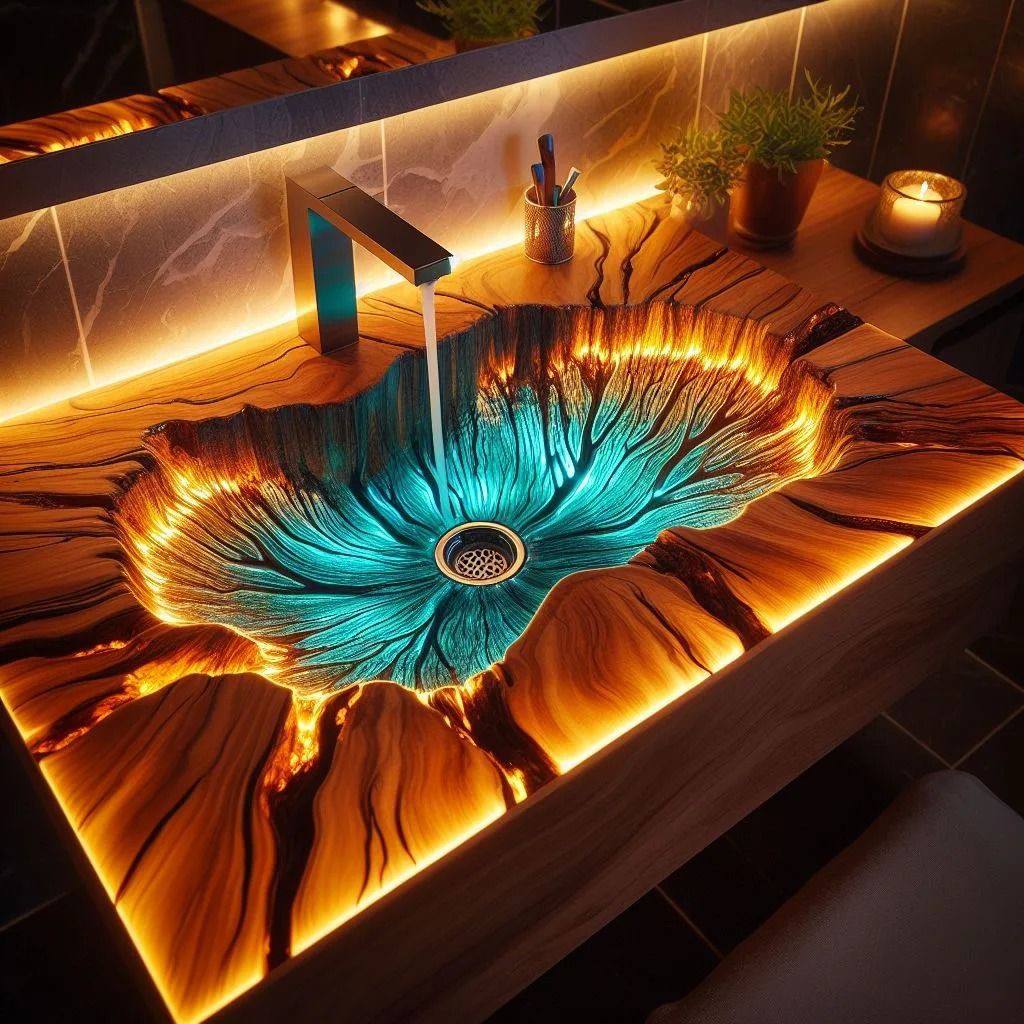
- Benefits:
- Enhanced aesthetics
- Improved functionality
- Considerations:
- Structural integrity
- Material compatibility
Structural Integrity
The structural integrity of a wood and epoxy sink is paramount for its overall performance and lifespan. Reinforcing the sink’s structure through techniques like proper sealing, strategic joint placements, and adequate support ensures long-term durability. Selecting high-quality materials that complement each other strengthens the sink’s construction and prevents issues such as warping or cracking over time.
- Importance of structural integrity
- Techniques for reinforcing sink structures
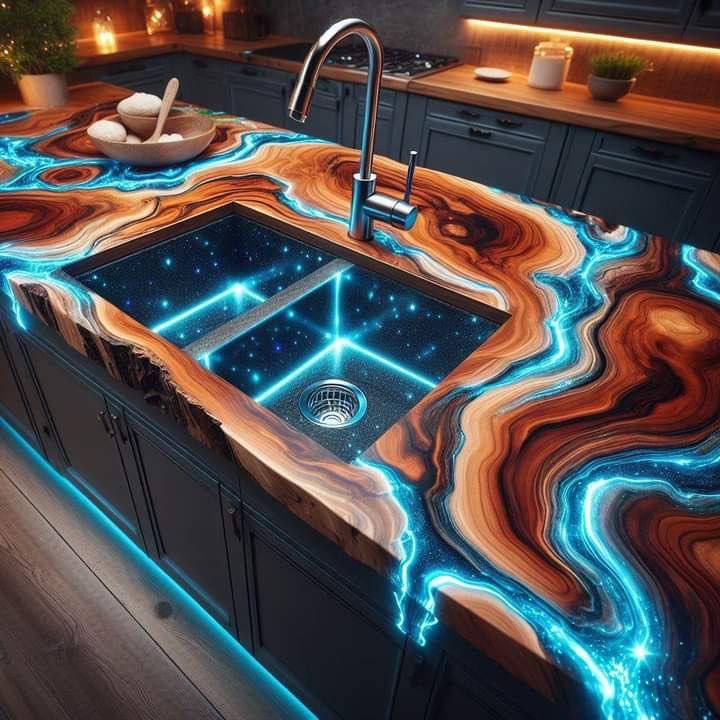
Waterproofing Strategies
Waterproofing is essential in maintaining the quality of wood sinks treated with epoxy. Epoxy serves as a protective barrier against moisture, preventing water damage and mold growth on wooden surfaces. Applying epoxy correctly and thoroughly sealing all seams and edges are key steps in ensuring comprehensive waterproofing to safeguard the sink from deterioration.
- Effective waterproofing strategies
- Role of epoxy in creating a waterproof barrier
Benefits of Wood-Epoxy Sinks
Unique Aesthetics
Wood and epoxy sinks offer unique aesthetics through various design ideas. By combining different wood types with colorful epoxy resin, striking patterns and textures can be achieved. Customization options like embedded objects or personalized engravings allow for a personal touch in sink designs. Innovative design elements such as asymmetrical shapes or organic contours can further enhance the visual appeal of wooden sinks.

Longevity and Durability
The longevity and durability of wood and epoxy sinks are influenced by several factors. Proper sealing techniques and high-quality epoxy coatings contribute to the longevity of the sink’s finish. Regular maintenance practices like resealing the surface and avoiding harsh chemicals can significantly extend the lifespan of wood-epoxy sinks. Implementing strategies such as using protective mats in high-traffic areas ensures the durability of wooden sinks, making them suitable for both residential and commercial settings.
Maintenance Ease
Maintaining wood and epoxy sinks is made easy with simple tips. Opting for low-maintenance finishes like polyurethane sealants reduces the need for frequent upkeep. Cleaning methods involving mild soap and water help preserve the sink’s finish without causing damage. Applying a protective wax coating periodically can safeguard the appearance of the sink with minimal effort, ensuring its longevity.
Troubleshooting Common Issues
Preventing Cracks
Wood and epoxy sinks are prone to cracks due to temperature changes and moisture exposure. To prevent cracks, ensure proper ventilation in the sink area. Regularly inspect for any signs of damage or wear and tear. Apply a protective sealant to maintain the sink’s integrity.
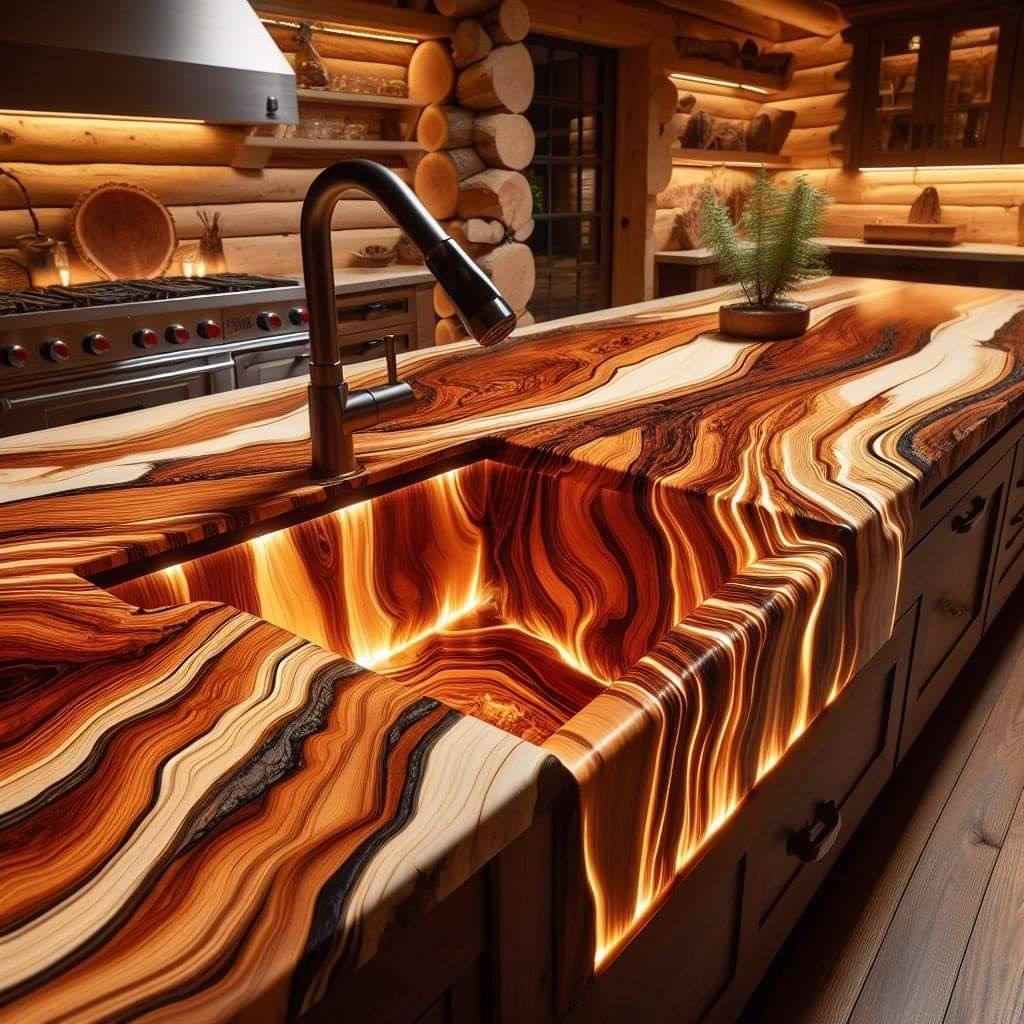
Fixing Imperfections
When imperfections arise in wood and epoxy sink finishes, address them promptly. Use fine-grit sandpaper to smooth out minor imperfections. For more significant damage, consider applying a fresh coat of epoxy resin. By addressing imperfections early, you can preserve the sink’s appearance and functionality.
- Repair minor scratches with a specialized epoxy repair kit.
- Sand down rough patches before reapplying a protective finish.
Enhancing Seal Strength
To enhance the seal strength between wood and epoxy in sinks, consider using bonding agents during installation. These additives improve adhesion and prevent separation over time. Applying multiple layers of epoxy can strengthen the seal further.
- Utilize marine-grade epoxy for enhanced durability.
- Implement proper curing techniques to maximize bond strength.
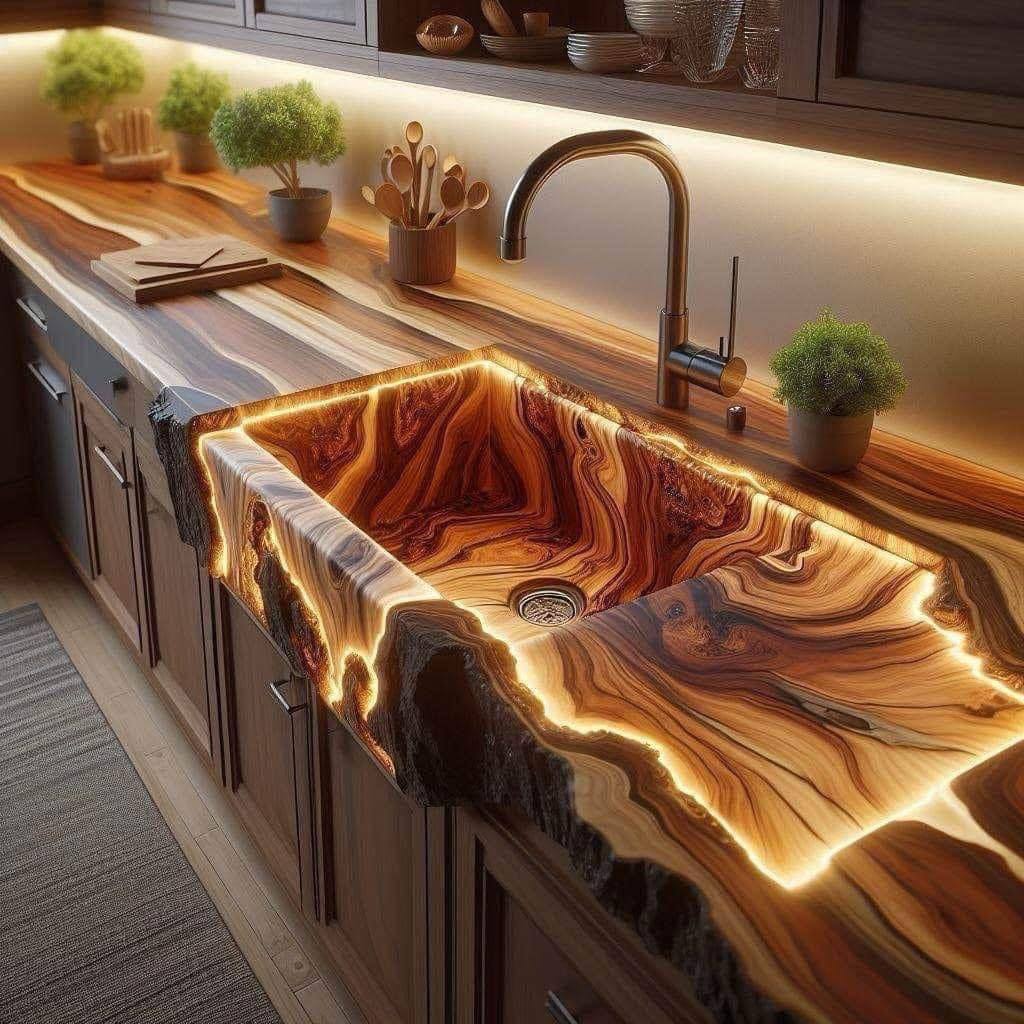
Summary
You now have a solid understanding of wood and epoxy sinks, from the intricate design process to troubleshooting common issues. By exploring different wood types and mastering epoxy application techniques, you can create durable and visually stunning sink designs that elevate your space. Sealing wooden countertops properly ensures longevity and maintains their beauty over time. The benefits of wood-epoxy sinks go beyond aesthetics, offering durability and customization options that traditional sinks may lack. Remember, attention to detail and proper maintenance are key to enjoying your wood-epoxy sink for years to come.










